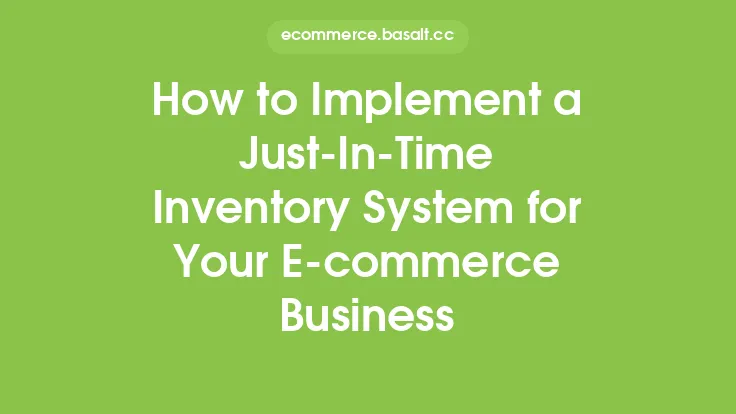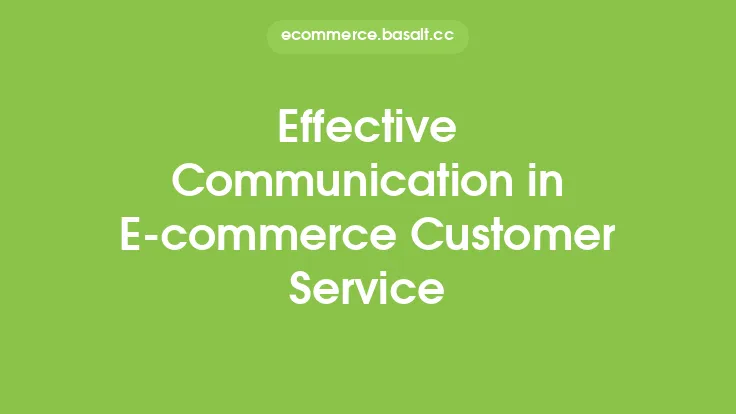Handling customer complaints is an inevitable part of running an e-commerce business. No matter how well you design your website, how efficient your shipping process is, or how high-quality your products are, there will always be customers who are not satisfied with their experience. It's how you handle these complaints that can make all the difference in building trust, loyalty, and ultimately, driving business success.
Understanding the Importance of Effective Complaint Handling
Effective complaint handling is crucial for e-commerce businesses because it directly impacts customer retention, reputation, and future sales. When customers feel heard and valued, they are more likely to give a business a second chance, even after a negative experience. On the other hand, poorly handled complaints can lead to negative reviews, social media backlash, and a significant loss of potential customers. Understanding the root cause of complaints and addressing them promptly can also help in identifying and fixing operational issues, thereby improving overall customer satisfaction.
Identifying Common Types of Customer Complaints
In e-commerce, customer complaints can stem from a variety of issues, including product quality, shipping and delivery, pricing and payment, website usability, and customer service interaction. Product quality complaints often relate to the product not meeting the customer's expectations in terms of functionality, size, color, or material. Shipping and delivery complaints can arise from delays, damaged goods, or issues with tracking. Pricing and payment complaints might involve misunderstandings about prices, discounts, or payment processing. Website usability complaints can range from difficulty in navigating the site to issues with checkout processes. Lastly, complaints about customer service interaction can stem from unresponsive, unhelpful, or rude service representatives.
Strategies for Handling Customer Complaints
Handling customer complaints effectively requires a strategic approach that prioritizes empathy, efficiency, and resolution. The first step is to listen actively to the customer's concern, ensuring that the issue is understood clearly. This can be done through various channels such as email, phone, live chat, or social media, depending on the customer's preference and the business's capabilities. Once the issue is understood, the next step is to acknowledge the customer's frustration and apologize for the inconvenience caused. This sets a positive tone for the resolution process and shows that the business values the customer's experience.
Implementing a Complaint Resolution Process
A well-defined complaint resolution process is essential for ensuring that customer complaints are handled consistently and efficiently. This process should include clear guidelines on how complaints are received, assessed, and resolved. It should also define the roles and responsibilities of the customer service team, including the escalation procedure for complex issues. The process should be designed to resolve complaints in a timely manner, with a focus on finding a mutually beneficial solution. This might involve offering a refund, replacement, or compensation, depending on the nature of the complaint and the business's policies.
Leveraging Technology for Efficient Complaint Handling
Technology can play a significant role in enhancing the efficiency and effectiveness of complaint handling in e-commerce. Tools such as helpdesk software, chatbots, and CRM systems can help in managing customer interactions, tracking complaints, and analyzing feedback. These tools can automate routine tasks, provide instant responses to common queries, and offer insights into customer behavior and preferences. Moreover, social media monitoring tools can help in identifying and addressing complaints posted on social media platforms, reducing the risk of negative publicity.
Measuring the Success of Complaint Handling
Measuring the success of complaint handling is crucial for identifying areas of improvement and assessing the effectiveness of the complaint handling process. Key performance indicators (KPIs) such as first response time, resolution rate, customer satisfaction score, and net promoter score can provide valuable insights into how well customer complaints are being handled. Regular analysis of these metrics can help in refining the complaint handling process, improving customer satisfaction, and ultimately, driving business growth.
Building a Positive Reputation Through Effective Complaint Handling
Effective complaint handling is not just about resolving customer issues; it's also about building a positive reputation for the business. When customers feel that their complaints are handled fairly and efficiently, they are more likely to become loyal advocates of the brand. Positive word-of-mouth, online reviews, and social media testimonials can significantly enhance the business's reputation, attracting new customers and driving sales. Moreover, a business that prioritizes customer satisfaction and complaint resolution demonstrates its commitment to quality and customer-centricity, setting it apart from competitors.
Conclusion
Handling customer complaints in e-commerce requires a proactive, customer-centric approach that prioritizes empathy, efficiency, and resolution. By understanding the importance of effective complaint handling, identifying common types of complaints, implementing a complaint resolution process, leveraging technology, measuring success, and building a positive reputation, e-commerce businesses can turn negative experiences into opportunities for growth and loyalty. In the competitive landscape of e-commerce, how a business handles customer complaints can be a key differentiator, influencing customer loyalty, reputation, and ultimately, business success.





